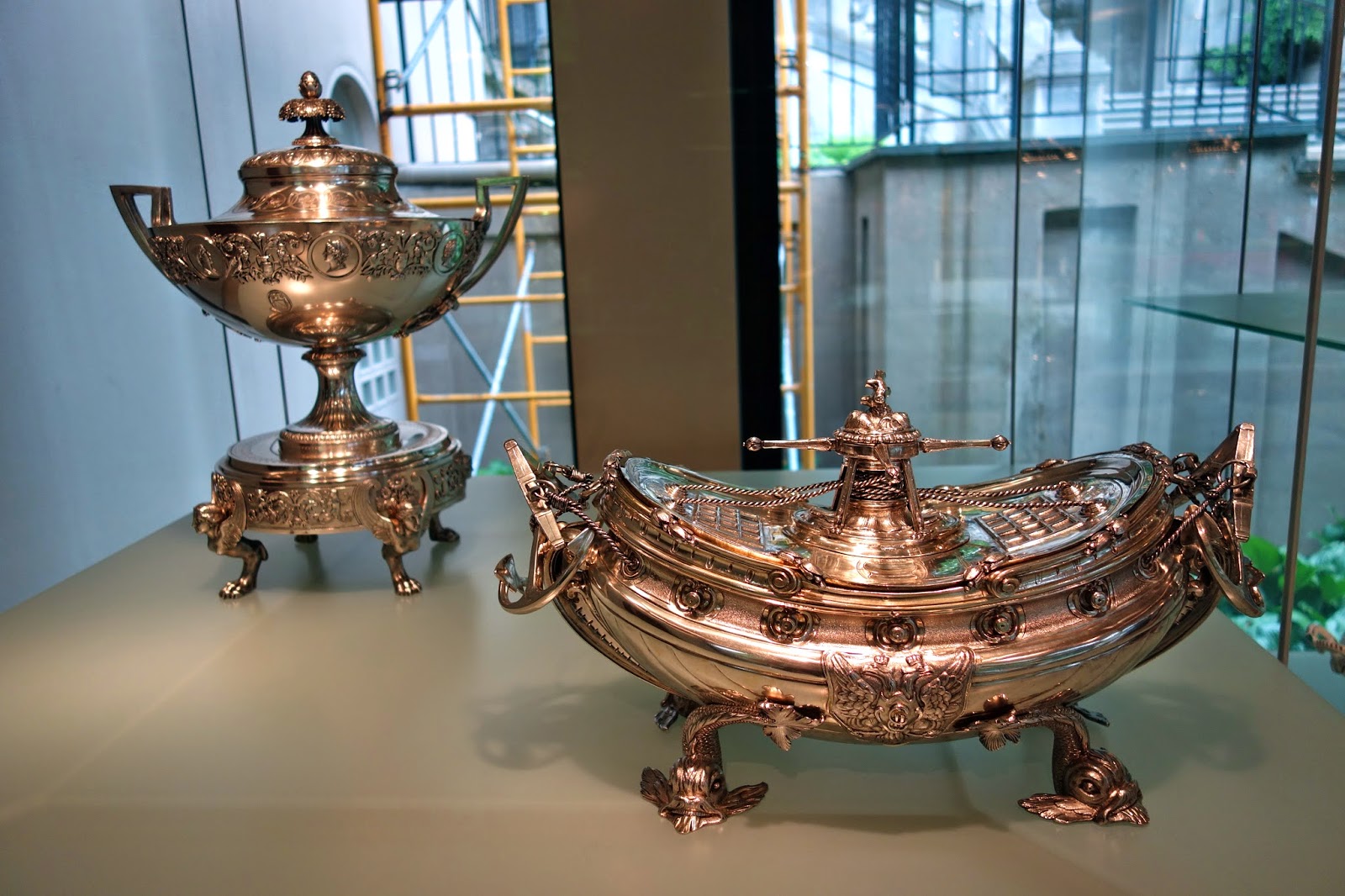The outside graphics catches your eye before you enter the front door.
 |
| The metal artist who created this sculpture shows his work at the Long's Park Arts & Craft Festival. |
It is also important for a place of business to have an up-beat vibe. After all, who wants to frequent a business that is depressing? At Shortino's, the earth-toned color palate--which began with the colorful print on the upholstered seating--is anything but drab.
Even in winter, the happy-orange feature-wall lifts the gloom.
One especially creative element in the shop's design is the free-form painting on the soft blinds. The artist pulled the colors from the chair fabric and let them spill across the accordion window coverings. The results is pure genius.
Leaving the waiting area and front desk, clients are taken to their stylist's chair. The owner's son, Frank Michael Shortino, cuts my hair. He is the third-generation of hair designers in the family. I not only appreciate his amazing ability to get my straight, baby-fine hair to cooperate, but I appreciate his love for literature and travel. We never run out of interesting topics of conversation.
I found Frank-Michael through my daughter who was living in New York City. At one point, Anna had a disastrous result when she had her hair lightened. I never saw it, but apparently, it was so bad she skipped work to have it repaired at another salon. Frank Michael, who still teaches cut and color internationally, worked his magic so no one ever knew of the oops.
Anna's misfortune became my fortune. Sitting in Frank Michael's chair in the trendy lower east side salon, she found out that he also worked part-time in York, Pennsylvania. On her rave review, I tried the salon, and now for nearly a dozen years, I have been the beneficiary of Frank Michael's talent. I have watched him grow from an artistic young stylist to a confident professional who now is married and lives full-time in Central Pennsylvania where he is being groomed to take over the family business.
Shortino's Salon will continue to thrive, because they keep their services and their environment current.
 |
| This memorable mural takes the customer's mind off the crick in their neck. |


































